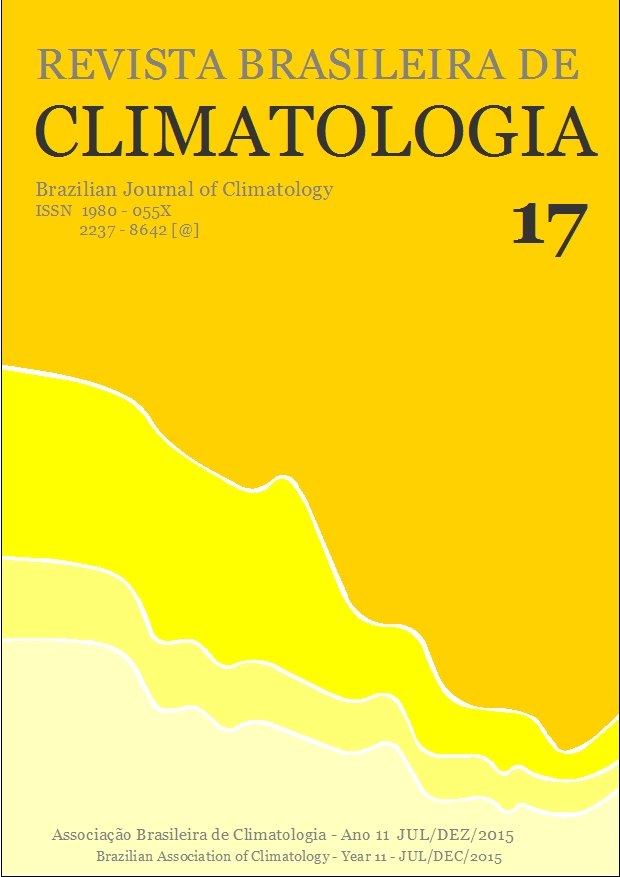ESTIMATION OF RAINFALL BY NEURAL NETWORK OVER A NEOTROPICAL REGION
DOI:
https://doi.org/10.5380/abclima.v17i0.40799Palavras-chave:
spatio-temporal dynamics, satellite observations, artificial intelligence, precipitation, CerradoResumo
Rainfall is the key element in regional water balance, and has direct influence over economic activity. Quantifying rainfall at spatial and temporal scales in regions where meteorological stations are scarce is important for agriculture, natural resource management and land-atmosphere interactions science. Thus, we evaluated neural network performance for rainfall estimates over Mato Grosso State located in the Brazilian Midwest region. A dataset of 12 meteorological stations was used to train the neural network, and then was run to perform estimates, which allowed comparing with TRMM satellite estimates. Rainfall estimates were performed by neural network as a function of latitude and longitude for model 1 (NN1), and latitude, longitude, and altitude for model 2 (NN2). In general, rainfall values were higher overestimated by NN1 in January (18.7%), and September (1,501%) than by NN2 in January (6.8%), and September (0%). While NN2 had rainfall pattern closer to TRMM both in January and in September, NN1 rainfall estimates captured a small amount of the rainfall pattern over Mato Grosso state. There was no higher difference between NN1 and NN2 rainfall estimates in January. On the other hand, rainfall estimates had better performance in NN2 than NN1 in September. Anyway, rainfall estimates were worst in January than in September both in NN1 and in NN2. Bad rainfall estimates using neural network in Mato Grosso state were due to (i) a short temporal dataset, (ii) few stations with poor spatial variability, (iii) few auxiliary variables to build neural network, which could better capture the rain phenomenon over Neotropical regions. The next step will be to analyze the rainfall and other climatic estimates performed by neural network for the whole year for several years on the Central-West Region of Brazil including other auxiliary variables besides latitude, longitude, and altitude.Downloads
Downloads
Publicado
Como Citar
Edição
Seção
Licença
A aprovação dos artigos implica a aceitação imediata e sem ônus de que a Revista Brasileira de Climatologia terá exclusividade na primeira publicação do artigo. Os autores continuarão, não obstante, a deter os direitos autorais. Os autores autorizam também que seus artigos sejam disponibilizados em todos os indexadores aos quais a revista está vinculada.
Os autores mantém seus direitos de publicação sem restrições
A Comissão Editorial não se responsabiliza pelos conceitos ou afirmações expressos nos trabalhos publicados, que são de inteira responsabilidade dos autores.
A Revista Brasileira de Climatologia oferece acesso livre imediato ao seu conteúdo, seguindo o entendimento de que disponibilizar gratuitamente o conhecimento científico ao público proporciona maior democratização do conhecimento e tende a produzir maior impacto dos artigos publicados. Os artigos publicados na revista são disponibilizados segundo a Licença Creative Commons CC-BY-NC 4.0 (https://creativecommons.org/licenses/by-nc/4.0/). Segundo essa licença é permitido acessar, distribuir e reutilizar os artigos para fins não comerciais desde que citados os autores e a fonte. Ao submeter artigos à Revista Brasileira de Climatologia, os autores concordam em tornar seus textos legalmente disponíveis segundo essa licença




